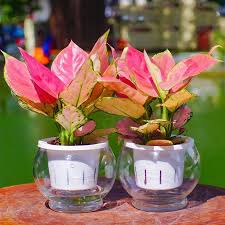Famous Royal Jewelry Pieces: A Glimpse into History and Luxury

Throughout history, royal jewelry has been a symbol of power, wealth, and grandeur. From coronations to state banquets, royal families have used these precious accessories to showcase their status and heritage. These exquisite pieces, often passed down through generations, tell the stories of empires, dynasties, and cultures. This article delves into some of the most famous royal jewelry pieces that have captivated the world with their beauty, rarity, and historical significance.
The Crown Jewels of the United Kingdom
One of the most iconic collections of royal jewelry in the world is the Crown Jewels of the United Kingdom. Housed in the Tower of London, these jewels have been used in the coronation of British monarchs for centuries. Among the most famous pieces is the St. Edward’s Crown, which is used during the coronation ceremony. This crown, crafted in 1661 for the coronation of Charles II, is made of solid gold and encrusted with a variety of precious gemstones, including sapphires, diamonds, and emeralds. Its design reflects the grandeur of British monarchy and its rich history.
Another remarkable piece in the Crown Jewels is the Imperial State Crown, which is worn by the monarch during the State Opening of Parliament. This crown is set with nearly 3,000 diamonds, including the famous Cullinan II diamond, also known as the “Second Star of Africa.” Weighing around 317 carats, the Cullinan II is one of the largest cut diamonds in the world and is a symbol of the British monarchy’s wealth.
Alongside these crowns, the Sovereign’s Sceptre with Cross is another significant piece of royal jewelry. This scepter, also used during coronation ceremonies, holds the Cullinan I, the largest clear-cut diamond in the world at 530.2 carats. It is an emblem of the monarch’s authority and the wealth of the British royal family.
The Tiara Collection of the Swedish Royal Family
The Swedish Royal Family is known for its stunning tiara collection, which showcases the country’s rich royal history. One of the most renowned pieces is the Napoleon Tiara, a piece that dates back to the early 19th century. Originally created for the French Empress Josephine by the famous jeweler, Nitot, it was later acquired by the Swedish royal family. The tiara is made of diamonds and features intricate motifs that reflect the neoclassical style of the era.
Another noteworthy piece is the Crown Princess Victoria’s Wedding Tiara. This tiara, which was worn by Crown Princess Victoria on her wedding day in 2010, is a stunning creation with diamonds arranged in a floral pattern. It is a symbol of Swedish elegance and royal tradition, and is often worn by the Swedish royal women during significant occasions.
The Queen Silvia’s Wedding Tiara, another stunning piece, is often associated with the Swedish royal family’s style. The tiara, which was worn by Queen Silvia during her wedding to King Carl XVI Gustaf in 1976, is made of diamonds and pearls and is considered one of the most regal pieces in the collection.
The House of Habsburg’s Imperial Collection
The House of Habsburg, one of the most powerful and influential royal families in Europe, boasts a rich history of opulent jewelry. Among the most notable pieces in their collection is the Habsburg Diamond Necklace, a legendary piece of jewelry that once belonged to Empress Maria Theresa of Austria. This necklace is composed of large, dazzling diamonds and reflects the grandeur of the Austro-Hungarian Empire. It was frequently worn by the royal family during important state occasions and was considered a symbol of the empire’s power.
The Habsburg Crown, though no longer used for coronations, remains one of the most famous pieces of jewelry in European royal history. It was created for the Holy Roman Emperors, and its ornate design is a testament to the Habsburgs’ dominance in European politics. The crown features a number of large diamonds, rubies, and emeralds, all set in intricate patterns that represent the empire’s vast territories.
The Necklace of the Empress of Russia
The Russian Imperial Family was known for its extravagant lifestyle and their unparalleled collection of jewelry. One of the most famous pieces from the Russian imperial collection is the Empress Alexandra’s Diamond Necklace. This piece was a wedding gift from Tsar Nicholas II to his wife, Alexandra, and features a stunning design with diamonds set in a pattern that mimics the shape of a garland. The necklace was a symbol of the deep love and respect that Nicholas II had for his wife, and it became one of the most iconic pieces of jewelry in Russian royal history.
Another famous piece of jewelry from the Russian royal collection is the Katherine the Great’s Necklace. This necklace, which features several large diamonds and a central sapphire, was part of Catherine the Great’s legendary collection. It symbolizes the grandeur of the Russian Empire during the 18th century, a period of great cultural and political development under Catherine’s reign.
The Spanish Royal Jewels
The Spanish Royal Family possesses one of the most significant and historic collections of royal jewelry. A notable piece in the collection is the Spanish Royal Tiara, which is a favorite of Queen Letizia. This tiara, which is made of diamonds and pearls, is often worn during state banquets and other official events. It is a reflection of Spain’s royal history and its deep-rooted connection to European nobility.
The Joyas de la Corona, or the Crown Jewels of Spain, includes a range of precious pieces, such as the Crown of Spain, the Sovereign’s Sceptre, and various necklaces, earrings, and brooches. The Spanish royal jewels are a symbol of the monarchy’s historical importance and Spain’s cultural wealth.
The French Imperial Jewels
The French Imperial Jewels, which were worn by the Empresses of France, are some of the most opulent and famous royal jewelry pieces in the world. Among the most renowned pieces is the Crown of Napoleon, which was worn by Napoleon Bonaparte during his coronation as Emperor of France. The crown, made of gold and set with diamonds, was a symbol of Napoleon’s ambitions and his desire to emulate the grandeur of the ancient Roman Empire.
The Napoleon Diamond Necklace, another significant piece, was worn by Empress Josephine. The necklace is set with diamonds and pearls and was one of the most coveted pieces of jewelry in Europe during the 19th century.
The Indian Maharajas’ Jewels
India’s royal families have long been known for their extravagant jewelry collections. Among the most famous are the jewels of the Maharajas of India, including the Nizam’s Necklace, which is considered one of the most valuable pieces in the world. The necklace features a collection of stunning diamonds, including the famous Jacob Diamond, and was worn by the Nizams of Hyderabad. The Nizam’s Necklace is a true testament to India’s rich cultural heritage and the opulence of the royal families.
The Maharani of Baroda’s Necklace, another iconic piece, is made of diamonds, emeralds, and rubies, and was a symbol of the wealth and power of the Baroda family. This necklace is frequently exhibited in museums around the world, showcasing the craftsmanship and beauty of Indian royal jewelry.
Conclusion
Royal jewelry is more than just luxury – it is a reflection of a nation’s history, culture, and political power. The famous pieces mentioned above, from the British Crown Jewels to the jewels of Indian Maharajas, represent centuries of royal legacy. These pieces, which have been passed down through generations, serve as tangible connections to the past, showcasing the immense wealth, skill, and artistry that have defined royal families for centuries. Whether in the form of crowns, tiaras, or necklaces, royal jewelry continues to captivate the world with its beauty and its fascinating stories.

